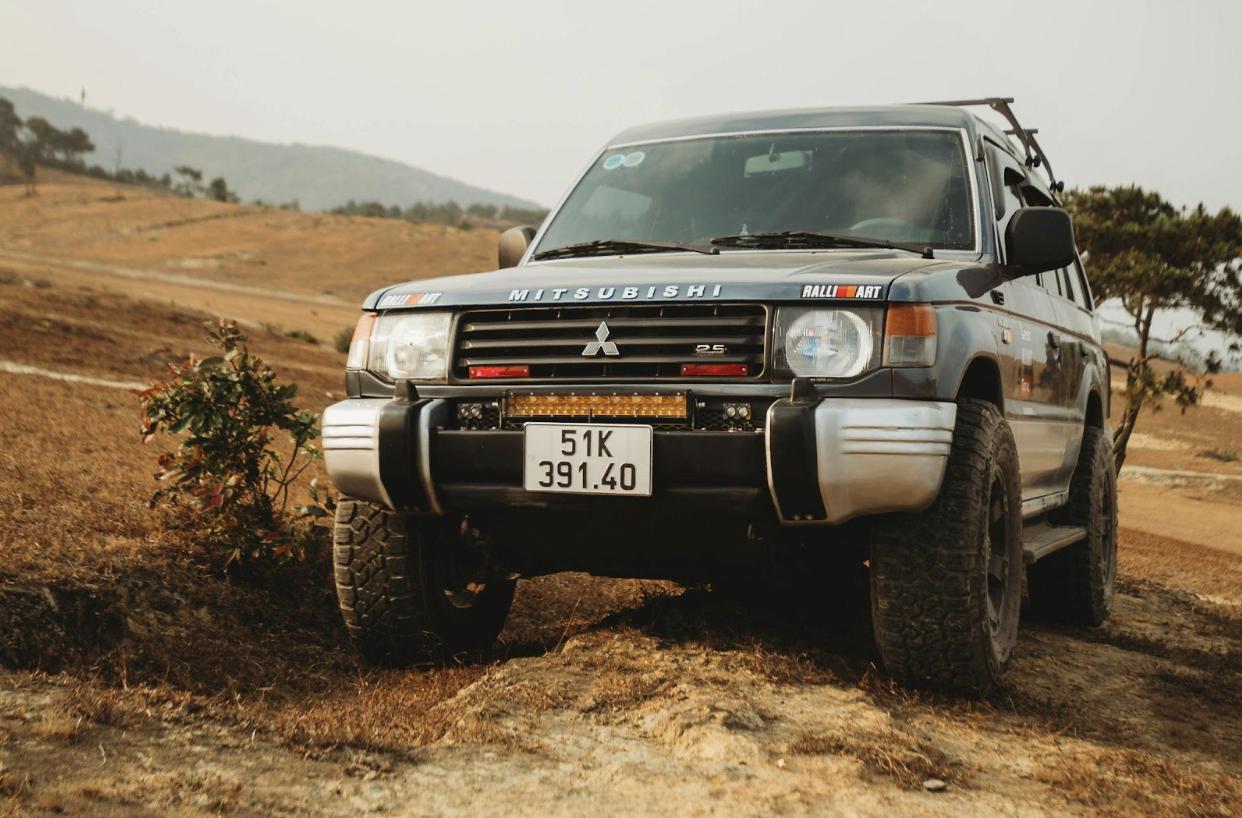Introduction
When you're behind the wheel of a used 4WD vehicle, smooth and responsive steering isn't just a bonus. It's a safety must, especially if you're driving across different types of terrain or changing weather conditions. Unlike front-wheel drive cars, 4WD vehicles are often driven on more than just paved streets, which means their steering systems take on more stress over time. If something goes wrong with the steering, you’ll probably feel it—and it’s not something to ignore.
The more road life your vehicle has seen, the more likely it is to show signs of steering issues. Potholes, gravel roads, tight turns, and even normal daily use can wear a steering system down. The upside is that most of these problems start with smaller signs. When you know what to look for and how to respond, you can catch trouble early and steer clear of bigger repairs or dangerous driving situations.
Common Steering Issues In Used 4WD Vehicles
Used 4WD vehicles can develop steering problems that may not be easy to spot unless you know what to listen and look for. These vehicles usually have complex drivetrains and often take on heavier challenges than your everyday sedan. That means steering parts might wear out sooner, especially if the vehicle has seen a lot of off-road action.
Here are some steering issues drivers typically experience in used 4WD vehicles:
- Loose steering wheel: If your wheel feels too easy to turn or seems to float, it could be from worn steering parts like the rack, pitman arm, or tie rods.
- Stiff steering: Struggling to turn the wheel might signal issues with the power steering system. This could include low fluid, a leak, or a failing power steering pump.
- Uneven turning: If your vehicle pulls to one side or takes turns awkwardly, that might be from misaligned wheels. Misalignment not only affects handling but increases wear on tires and steering parts.
- Clunking or knocking noises: If you hear odd sounds while turning at lower speeds, like in a parking lot, you may have failing suspension parts such as ball joints or control arms, which directly affect steering.
- Excessive play: If the steering wheel feels like it has too much slack or doesn't respond right away, it can be from worn or loose components that need to be replaced.
Wear and tear is expected, but keep in mind that off-road use makes it worse. Mud, water, harsh terrain, and sudden jolts can wear out joints and bushings more quickly. Even if you're just cruising around Saluda these days, past use from a previous owner may already have put strain on the system.
If you ever feel your wheel shift unexpectedly during a bump or hear something that doesn’t sound right, that’s often your vehicle’s way of asking for attention. Catching problems at this stage helps avoid bigger repair bills and keeps things safer on the road.
Diagnosing Steering Issues
Spotting a steering issue on your used 4WD might sound tricky, but it mostly comes down to paying close attention. You don’t need to be a certified mechanic to figure out that something doesn’t feel right. Here’s a simple checklist that helps point you in the right direction.
1. Start with a visual inspection
Lift the hood and look around the power steering system. Are there leaks near the reservoir? Are belts cracked? Damaged hoses or loose steering components underneath the front end are good reasons for concern.
2. Listen while driving
Find a quiet parking lot and turn the steering wheel slowly both ways. Listen for clicks, groans, clunks, or anything out of the ordinary. Each of those sounds can point to different worn-out parts.
3. Pay attention to performance
Does your wheel vibrate when going straight or fail to return to center after a turn? That might mean alignment trouble or issues with the power steering.
4. Test the steering tightness
Turn your wheel with the car running and parked. Does it feel overly loose or too tough to turn? Both results are red flags worth checking out.
5. Take note of how it handles when parking
If it’s harder than usual to turn at slow speeds or when parking, power steering assist failure could be the cause.
One owner we worked with in Saluda mentioned their truck started pulling slightly to the right. At first, they blamed tire pressure. Weeks later, the steering wheel began to stiffen and make noise. The final diagnosis? Worn steering linkage from years of back-road driving. A repair that could have been simpler earlier on turned into a full-day shop visit.
Solutions And Fixes For Steering Problems
After noticing a steering problem, the next step is correcting it before it gets worse. Even small issues can sometimes be symptoms of something deeper going wrong. Always deal with steering concerns quickly. Your vehicle’s safety depends on it.
Most steering fixes relate to a few core parts: tie rods, bushings, power steering pumps, and fluids. These parts wear slowly but surely. And if one goes unchecked, others can wear faster or break as a result. A power steering leak, for instance, can cut pumping power and lead to heavier steering and long-term damage to the full system.
If your wheel has recently become tougher to turn or makes strange noises, the likely culprit is power steering fluid that’s either low or leaking. This calls for a full inspection. Replacing or topping up the fluid may bring things back to normal, but you won’t know that until a repair shop checks for the root issue.
Other signs, like loose or skipping steering, could mean your tie rods or ball joints need to be replaced. Misalignment caused by jolts or part wear should always be fixed by someone with the proper tools to realign your steering back to spec safely.
Trying to repair steering problems yourself without the experience or equipment can be risky. These components are under tension and play a big role in overall vehicle safety. If you’re unsure, leave it to technicians who’ve worked on 4WD vehicles routinely. It’s far better to get a true fix the first time than a guess that may make things worse.
Empty Paragraph
Preventive Maintenance Tips For Used 4WD Vehicles
The best approach to handling steering issues is to avoid them as much as possible. Sticking to a basic maintenance schedule takes only a few minutes out of your week but can save you a lot of grief.
Here are some easy ways to extend the life of your steering system:
- Schedule a wheel alignment yearly, or if you notice uneven tire wear or your vehicle pulling.
- Always check your tire pressure. Incorrect pressure can make the steering work harder and stress the whole system.
- Check your power steering fluid monthly. If it changes color or looks dirty, it may be breaking down or absorbing water.
- Stay alert to new sounds. A popping, squeaking, or grinding noise while turning can be your first warning.
- Avoid hitting curbs and potholes when possible. These impacts can cause fast misalignment or damage key components.
- Wash off road grime, salt, and mud. Letting buildup sit on parts like control arms and joints makes rust and wear develop faster.
Just like changing your oil keeps the engine healthy, these habits help your steering system stay responsive and safe. Small actions now mean you’re not left stranded or steering through a tough problem later.
Safe Steering Keeps You Moving Around Saluda
As fall arrives in Saluda, wetter roads, fallen leaves, and colder temps can make any weakness in your steering feel worse. Small issues like loose handling or poor turn response become more dangerous under these conditions. That's why it's smart to catch them early or have an expert check things out before they grow into something more serious.
Used 4WD vehicles are good for more than just rough roads. They’re built for all sorts of places and tasks, but they rely heavily on working parts you can count on. Steering is one of the biggest of those. Whether it’s a minor sound or the way your wheel pulls, don’t ignore changes. Fixing problems now keeps your vehicle comfortable, controlled, and ready for wherever your next trip takes you.
Keeping your steering system in top shape ensures safe and smooth journeys around Saluda. If you're shopping for something dependable to handle both highways and rougher routes, take a look at our available used 4WD vehicles at United Auto Sales Saluda. Each one is prepped to take on whatever the road throws your way.



